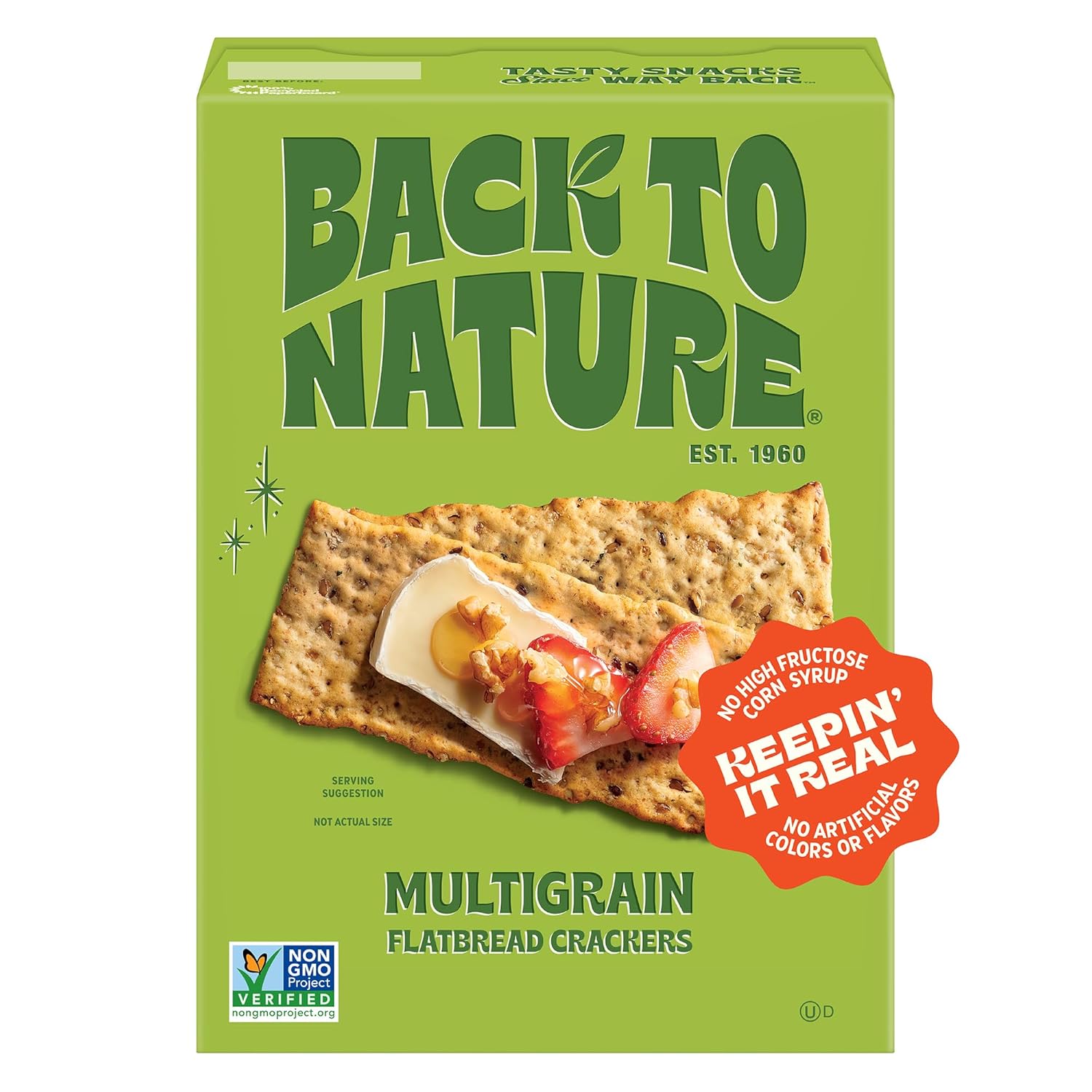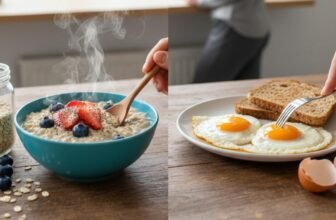
It’s 3 p.m. The morning’s energy has completely vanished, your focus is shot, and your eyelids feel like they’re weighed down with tiny lead weights. It’s the classic afternoon slump.
So you do the responsible thing. You walk right past the vending machine with its siren song of candy bars and chips. You grab that “healthy” snack you packed—the granola bar with pictures of mountains on it, the fruit juice that promises a burst of vitamins, the low-fat yogurt you’ve been told is the smart choice. You eat it, feeling pretty good about yourself.
And then… nothing. Or worse, you feel even more tired. More sluggish. The brain fog gets thicker. An hour later, you’re not just tired; you’re also weirdly hungry again, craving something sweet.

What is going on?
It’s a frustrating, confusing feeling. You’re trying to do the right thing for your body, but it feels like your body is betraying you. Honestly, it’s enough to make you want to give up and just eat the cookie.
But what if I told you it’s not your fault? And that you’re not imagining it? There’s a very real, very scientific reason why so many so-called “healthy” snacks are actually energy vampires in disguise. It’s a biological bait-and-switch, and once you see it, you can’t unsee it. Let’s pull back the curtain.
The Blood Sugar Rollercoaster: What’s Really Happening Inside

Okay, let’s break down what’s happening in your body. This isn’t about calories or fat grams. It’s all about blood sugar.
Think of it this way: your body runs on a type of fuel called glucose, which is just a simple sugar that it gets from breaking down carbohydrates. When you eat, your blood glucose levels naturally rise. In response, your pancreas sends out a hormone called insulin. Insulin is like a helpful traffic cop, directing the glucose out of your bloodstream and into your cells to be used for energy. It’s a beautiful, elegant system.
But the speed at which that glucose hits your bloodstream matters. A lot.
Scientists have a tool for this called the Glycemic Index (GI). It’s basically a speed rating for carbs, on a scale of 0 to 100.
- Low-GI foods (55 or less): These are the slow-burners. Think whole grains, veggies, and nuts. They release glucose gradually, giving you nice, steady energy.
- High-GI foods (70 or more): These are the drag racers. They dump glucose into your bloodstream almost instantly. We’re talking white bread, pretzels, and, you guessed it, a lot of sugary snacks.
When you eat a high-GI snack, your body panics. It sees this massive, sudden spike in blood sugar (hyperglycemia) and screams, “Red alert!” Your pancreas overreacts, flooding your system with a huge wave of insulin to deal with the threat.
And here’s where the crash comes in. That big insulin wave does its job a little too well. It shoves the glucose out of your blood so fast that your levels plummet, dropping even lower than they were before you ate. This state is called reactive hypoglycemia, and it’s the scientific name for that dreaded “sugar crash”.
Suddenly, your brain, which needs a steady supply of glucose to function, is running on fumes. And that’s when it hits you: the fatigue, the brain fog, the irritability, the headache, the sudden craving for more sugar to fix the problem. It’s a vicious cycle. You eat a sugary snack to get energy, you crash, and then your body screams for another sugary snack to stop the crash.
Unmasking the Villains in the Snack Aisle

The real trick is that many of these blood-sugar-spiking foods are hiding in plain sight, disguised as health foods. Let’s take a walk down the grocery aisle and expose a few of the worst offenders.
🔋 Snack Smart: Fuel or Crash?
Choosing the right snack is the key to sustained energy and productivity.
🧛 Energy Vampires
High Glycemic Index (GI) = Rapid Spike & Crash
Choc. Chip Granola Bar (1 bar)
Flavored Low-Fat Yogurt (6 oz)
Rice Cakes, Plain (2 cakes)
🦸 Real Energy Heroes
Low Glycemic Index (GI) = Slow, Steady Fuel
Handful of Almonds (~1 oz)
Plain Greek Yogurt w/ Berries (6 oz, ½ cup)
Hummus with Carrots (2 tbsp, 1 cup)
1. The Granola Bar Deception:

It’s got oats, maybe a few nuts, and a wholesome-looking wrapper. But flip it over. Many popular granola bars are loaded with sugar—sometimes as much as 13 grams of added sugar. One analysis found that some bars have a higher sugar concentration than cola. They’re often held together with syrups and have very little protein or fiber to slow down that sugar rush.
2. The Problem with Fruit Juice:

We think of juice as healthy, but when you juice a fruit, you strip out one of its most important parts: the fiber. Fiber is the brake pedal for sugar absorption. Without it, the natural fruit sugar hits your bloodstream like a freight train, causing a massive insulin spike and setting you up for a crash.12 An 8-ounce glass of orange juice can have 26 grams of sugar and barely any fiber.
3. The Low-Fat Yogurt Lie:

For decades, we were told fat was the enemy. So food companies took the fat out of yogurt. But what did they replace it with to make it taste good? Sugar. Lots and lots of sugar, plus thickeners and stabilizers. A seemingly innocent fruit-flavored yogurt can easily pack over 15 grams of added sugar, turning a high-protein snack into a sugary dessert that sends your energy levels haywire.
4. The Trouble with Dried Fruit:

Dried fruit is just fruit with the water removed. That sounds fine, but it means the sugar and calories are super-concentrated. A small handful of raisins can be a sugar bomb. And worse, many companies add more sugar to dried cranberries and mangoes. While they do have fiber, it’s incredibly easy to eat too much, leading to a huge sugar load that your body struggles to handle.
5. The Empty Promise of Rice Cakes and Pretzels:

These are the classic “diet” snacks. They’re low-fat and low-calorie, but they’re also nutritionally empty. Made from refined white flour or puffed rice, they have virtually no fiber, protein, or fat to buffer their impact. Pretzels have a sky-high GI of 83. They cause a massive blood sugar spike, a huge insulin response, and then the inevitable, energy-sapping crash.
It’s Not Just You: Our Whole Snacking Culture Is Broken

This problem is bigger than just a few misleading snacks. The very way we eat has changed, and it’s setting us up for fatigue.
First, there’s the rise of “snackification.” We’re snacking more than ever. In 2024, the number of people snacking multiple times a day jumped to 27%, way up from 15% the year before. And we’re not just having snacks between meals; we’re replacing entire meals with them. About one in six American adults now replaces meals with snacks. We do it for convenience, to curb cravings, or, ironically, to boost energy.
This trend is propped up by a persistent myth we’ve all heard: the idea that eating small, frequent meals every 2-3 hours “stokes your metabolic fire.” It sounds good, but science has thoroughly debunked it. Study after study has found zero metabolic advantage to eating six small meals versus three larger ones. In fact, one study found that the frequent snackers were actually hungrier and had a stronger desire to eat.
So you have a culture that encourages constant snacking, fueled by a myth that tells you it’s good for your metabolism. The result? We’re constantly bombarding our bodies with food, and when that food is the high-GI, low-nutrient “healthy” junk, we’re basically living on a blood sugar rollercoaster all day long. No wonder we’re exhausted.
The Way Out: How to Snack for Real, Lasting Energy
Okay, enough of the bad news. The good news is that fixing this is surprisingly simple. It’s not about dieting or depriving yourself. It’s about snacking smarter. Here’s the game plan.
1. Embrace the Power Trio: Protein, Fat, and Fiber

This is the secret. The absolute key to stable energy. Every time you have a snack, make sure it includes at least two of these three things.
- Protein slows down digestion and keeps you feeling full and satisfied.
- Healthy Fats (from nuts, seeds, avocado) are even better at slowing things down, preventing that rush of sugar into your blood.
- Fiber acts like a sponge, slowing the absorption of sugar and keeping things steady.
A great rule of thumb comes from dietitian Bridget Reiter, MS, RDN, who suggests a “P+P combo” for every snack: Protein + Produce. This simple pairing ensures you get the satiating power of protein and the steadying fiber from a fruit or vegetable.
2. Become a Label Detective

You have to ignore the flashy claims on the front of the box and become a student of the Nutrition Facts panel on the back. It’s where the truth lives. Here’s what to look for:
- Added Sugars: This is the big one. It separates the natural sugars (like in fruit) from the junk they pump in during processing. Aim for snacks with less than 10 grams of sugar.
- Dietary Fiber: Look for at least 3 grams of fiber. This is your blood sugar’s best friend.
- Protein: Aim for at least 5 grams of protein to give your snack real staying power.
3. Make Smart Swaps and Perfect Pairings

This is where it all comes together. It’s about trading the energy vampires for the energy heroes.
| Instead of This High-GI Snack… | Try This Balanced, Low-GI Alternative… |
| Pretzels or Rice Cakes | Hummus with cucumber and bell pepper slices |
| A Sugary Granola or Cereal Bar | A hard-boiled egg and a handful of walnuts |
| Fruit Juice | A whole apple with a tablespoon of almond butter |
| Flavored, Low-Fat Yogurt | Plain Greek yogurt with a handful of fresh berries |
| A Muffin or Pastry | A protein smoothie with spinach, avocado, and protein powder |
Notice the pattern? We’re not eating less; we’re eating better. We’re adding protein, fat, and fiber to everything. You can still eat rice cakes, but top them with avocado or hummus. You can still have fruit, but eat the whole thing and pair it with some nuts. These small changes make a world of difference.
Need More Help? Look Into These.
Knowing what to eat is one thing, but having the right stuff on hand when you’re busy is the real challenge. Let’s be honest, convenience is a huge reason we grab those energy-draining snacks in the first place. Here are a few smart, pre-packaged options that align with the “protein, fat, and fiber” rule, making it easier to stay fueled and avoid the crash.
1. A Genuinely Low-Sugar Protein Bar.

Most protein bars are just candy bars in disguise, but some brands get it right. Barebells Protein Bars, for example, pack around 20g of protein with no added sugar, giving you that sweet fix and the sustained energy without the blood sugar spike and subsequent crash.
2. High-Quality Seed Crackers.

Instead of empty-calorie rice cakes or pretzels, try crackers made almost entirely from seeds. Top Seedz 6-Seed Crackers are a great example, loaded with a mix of sesame, sunflower, flax, and pumpkin seeds. They deliver fiber, protein, and healthy fats, making them a perfect vehicle for hummus or avocado.
3. Grass-Fed Beef Jerky Sticks.

For a savory, high-protein punch, jerky is fantastic. Look for brands that prioritize clean ingredients. Chomps Beef Jerky Sticks are made from 100% grass-fed beef and have 0g of sugar, making them an ideal choice to curb hunger and keep your energy levels stable between meals.
4. Raw Mixed Nuts & Seeds.

The ultimate simple snack. Having a bag of high-quality, unsalted mixed nuts and seeds on hand is a game-changer. Brands like Terrasoul Superfoods offer raw, organic trail mixes that provide that perfect balance of protein, healthy fats, and fiber to keep you full and focused for hours.
5. Clean & Simple Protein Shakes.

When you’re really on the go, a good protein shake can be a lifesaver. OWYN (Only What You Need) Vegan Protein Shakes offer 20g of plant-based protein with low sugar content. They’re a quick and easy way to get in quality protein and avoid the temptation of a sugary coffee drink when that afternoon slump hits.
The Real Definition of a “Healthy” Snack
For too long, we’ve been tricked into thinking “healthy” means low-calorie or low-fat. But that’s not the whole story. A truly healthy snack isn’t defined by what it lacks, but by what it gives you: stable, sustained energy that lets you live your life without the constant threat of a crash.
It’s about moving from being a passive consumer, swayed by clever marketing, to an informed eater who understands what your body actually needs. It’s about choosing foods that work with your body’s biology, not against it.
As the health writer Heather Morgan said, “Every time you eat or drink, you are either feeding disease or fighting it”. By choosing snacks that balance your blood sugar, you’re not just fighting fatigue—you’re fighting for your long-term health and well-being. And that’s a choice that gives you real power.






